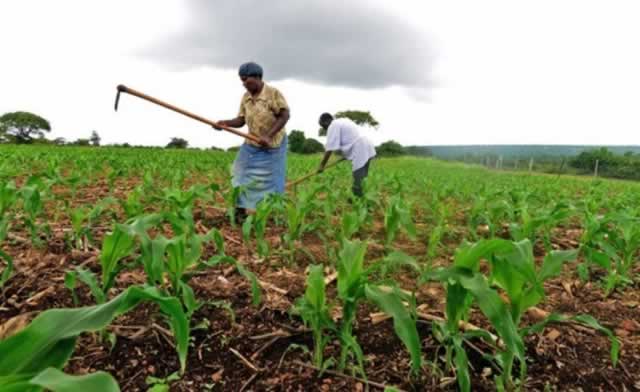Farming season in full swing

Obert Chifamba Manicaland Bureau
FARMERS in Mutare district are more than 85 percent ready for the 2017-18 farming season and have started planting the early crop, Agritex Mutare district agronomist Mr Pasipanodya Chiturike has said.
In an interview in Mutare yesterday, Mr Chiturike said the district’s season started with the second “dekad” (days of November starting from 11 to 20) of November when the first effective rains fell, which left farmers planting or doing land preparations in some cases.
“Farmers in the different areas that fall under Mutare District have to plant different crop varieties depending on the rainfall patterns of the regions. For farmers in the Zimunya and Marange areas that fall under Natural Region 3, it is vital to plant medium to early maturing varieties that quickly grow to maturity. They have since received the effective rains they need so planting now forms their core activities.
“Odzi too falls under Region 3 while a place like Marange, that is in Natural Region 5, requires farmers to be planting early maturing small grain crop varieties such as pearl millet and finger millet. So far the average cumulative rainfall of the district is 144mm, which means that more than 20cm of the top soil are moist enough to support germination,” explained Mr Chiturike.
Mutare district covers areas such as Zimunya, Marange, Odzi, Burma Valley and Vumba. Burma Valley and Vumba are high rainfall areas so farmers there should plant long-season varieties, as they always have enough rain to grow to maturity, said Mr Chiturike.
Organic Manure
He added that farmers could apply either organic manure or inorganic basal fertilisers at planting to give the crops a good send-off but was quick to advise farmers against allowing weeds to grow alongside crops.
“Weeds compete for nutrients with the plants. They also want the same moisture that plants need and most of the time become habitats for pests that later attack crops or spread diseases. Farmers growing small grains such as pearl millet may also need to do thinning out so that they remain with desirable plant populations,” said Mr Chiturike.
He confirmed that most of the farmers were able to get inputs from four possible sources available to them – own purchases (those that buy using their own resources), Command Agriculture (those registered for the programme), Presidential Inputs (free inputs from the President) and remittances (from reliable relatives, friends or children).
This, he said, had allowed farmers to meet planting deadlines recommended for their different areas, which was a good development in the fight to boost food security and push the country back to its “breadbasket of Africa” status, which it had lost in the recent past, thanks to bad seasons.







Comments